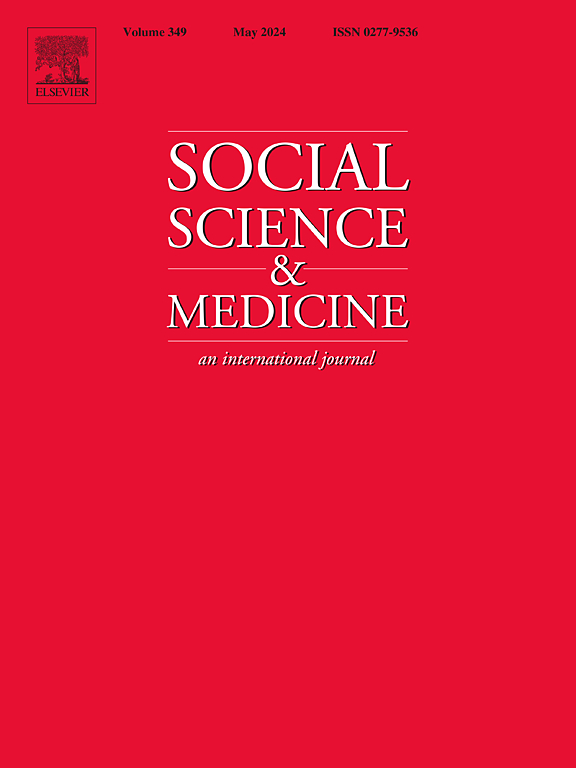以生物心理社会方法了解西班牙裔和非西班牙裔白人膝关节骨关节炎患者在运动参与方面的差异。
IF 4.9
2区 医学
Q1 PUBLIC, ENVIRONMENTAL & OCCUPATIONAL HEALTH
引用次数: 0
摘要
有规律的锻炼对控制膝骨关节炎(KOA)症状至关重要。尽管有既定的研究结果,但对于KOA患者来说,持续的运动采用仍然是一个挑战,西班牙裔患者之间存在显著差异,需要确定解释运动参与中种族差异的决定因素。本研究的目的是采用生物心理社会模型来确定运动参与的决定因素,并强调种族差异。来自大学医院诊所的患者(n = 163)进行了医学检查,根据x线片被认为符合研究条件。符合条件的参与者完成了经过验证的调查措施,评估了过去两周的运动参与情况,以及生物、心理和社会领域的措施,以预测未来的运动意图。结构方程模型对路径进行了假设。过去的运动行为预测态度、自我效能和未来的运动意图。疼痛灾难化与运动参与相关,但医生和(个人)社会支持对运动的竞争效应抵消了疼痛灾难化对运动参与的重要性。重要的种族比较发现,非西班牙裔白人患者受教育程度更高,收入更高,身体质量指数更低,态度和自我效能得分更高,锻炼时间更长。两种族间的非显著影响包括意向、医生支持和社会支持。设计一种有助于促进患者医生和最近的朋友/家庭成员支持的干预措施可以在两个种族的运动参与中发挥至关重要的作用。对拉美裔人态度和自我效能感的进一步关注可以解决一些差异。本文还提供了利用生物心理社会方法促进运动公平的进一步说明。本文章由计算机程序翻译,如有差异,请以英文原文为准。
A biopsychosocial approach towards understanding disparities in exercise participation between Hispanic and non-Hispanic White patients living with knee osteoarthritis
Engaging in regular exercise is essential for managing knee osteoarthritis (KOA) symptoms. Despite the established findings, sustained exercise adoption remains a challenge for KOA patients, with notable disparities among Hispanic patients, warranting a need to identify determinants that explain the racial discrepancy in exercise participation. The purpose of this study was to employ a biopsychosocial model to identify determinants of exercise participation and highlight racial disparities. Patients (n = 163) from a university hospital clinic were medically examined to be considered eligible for the study based on radiographs. Eligible participants completed validated survey measures that assessed exercise participation over the past two weeks, along with measures from biological, psychological and social domains to predict future intention exercise. Structural equation modelling tested hypothesized the paths. Past exercise behavior predicted attitudes, self-efficacy, and future exercise intentions. Pain catastrophizing correlated with exercise participation, but the competing effects of physician and (personal) social support on exercise nullified the significance of pain catastrophizing to exercise participation. Significant ethnicity comparisons found non-Hispanic white patients to have higher education, income, lower BMI, stronger scores on attitudes and self-efficacy, and greater exercise participation time. Non-significant effects between the two ethnicities include intention, physician support, and social support. Designing an intervention that helps foster support from the patient's physician and proximal friends/family members can play a vital role in exercise participation for both ethnicities. Additional focus on developing attitudes and self-efficacy among Hispanics can address some disparities. Further notes on promoting exercise equity using a biopsychosocial approach are provided.
求助全文
通过发布文献求助,成功后即可免费获取论文全文。
去求助
来源期刊

Social Science & Medicine
PUBLIC, ENVIRONMENTAL & OCCUPATIONAL HEALTH-
CiteScore
9.10
自引率
5.60%
发文量
762
审稿时长
38 days
期刊介绍:
Social Science & Medicine provides an international and interdisciplinary forum for the dissemination of social science research on health. We publish original research articles (both empirical and theoretical), reviews, position papers and commentaries on health issues, to inform current research, policy and practice in all areas of common interest to social scientists, health practitioners, and policy makers. The journal publishes material relevant to any aspect of health from a wide range of social science disciplines (anthropology, economics, epidemiology, geography, policy, psychology, and sociology), and material relevant to the social sciences from any of the professions concerned with physical and mental health, health care, clinical practice, and health policy and organization. We encourage material which is of general interest to an international readership.
 求助内容:
求助内容: 应助结果提醒方式:
应助结果提醒方式:


